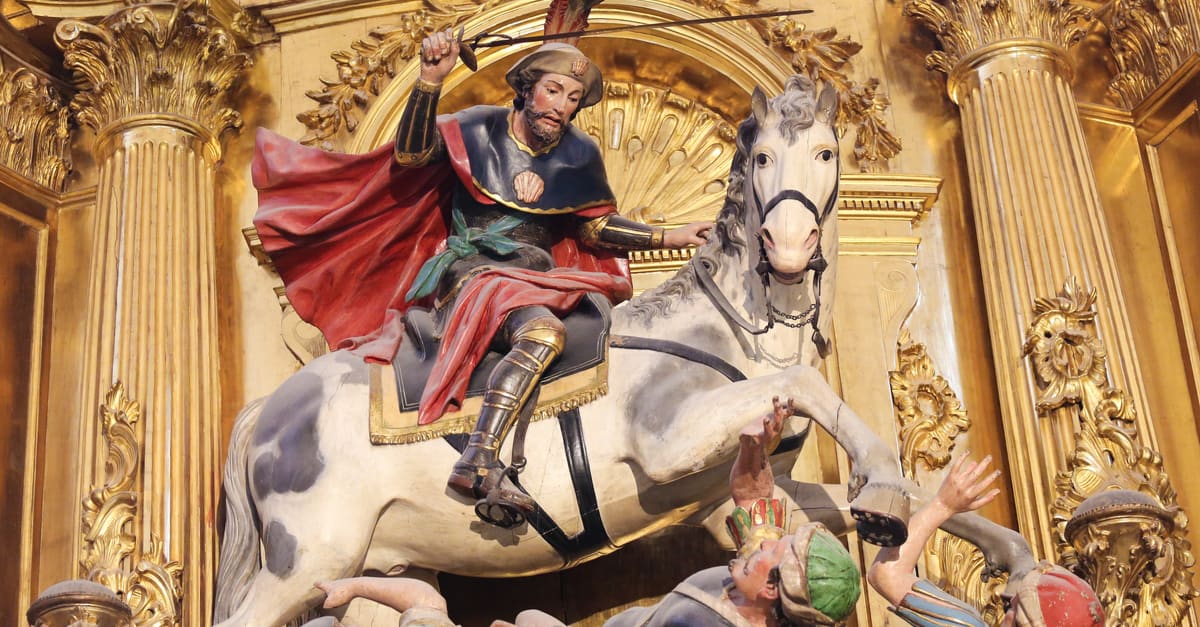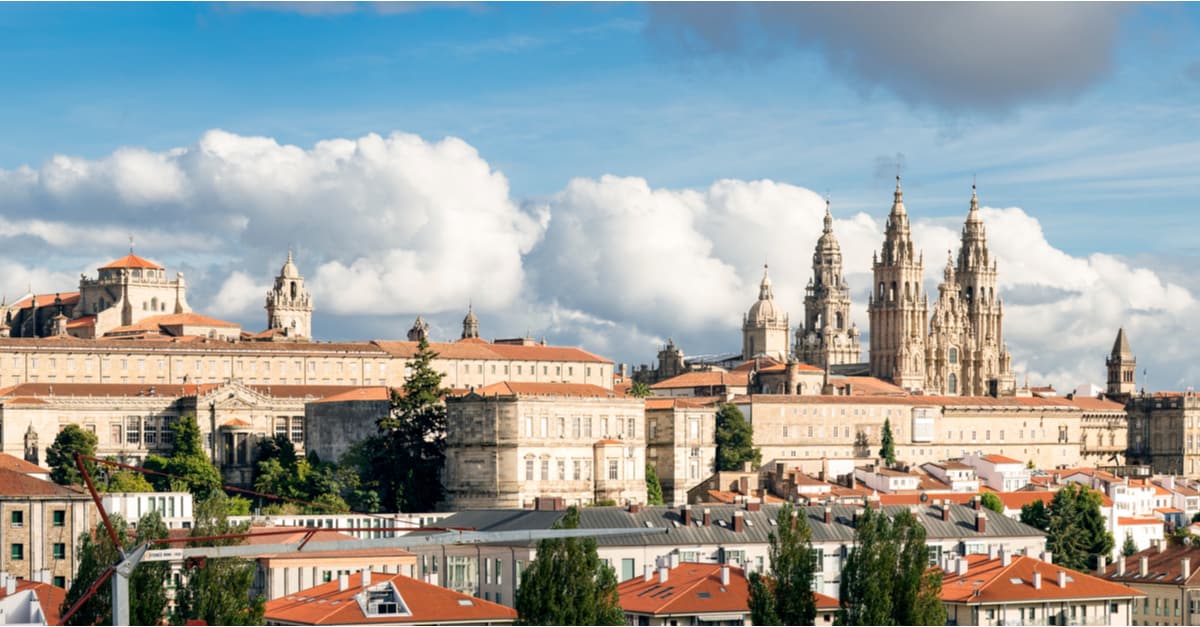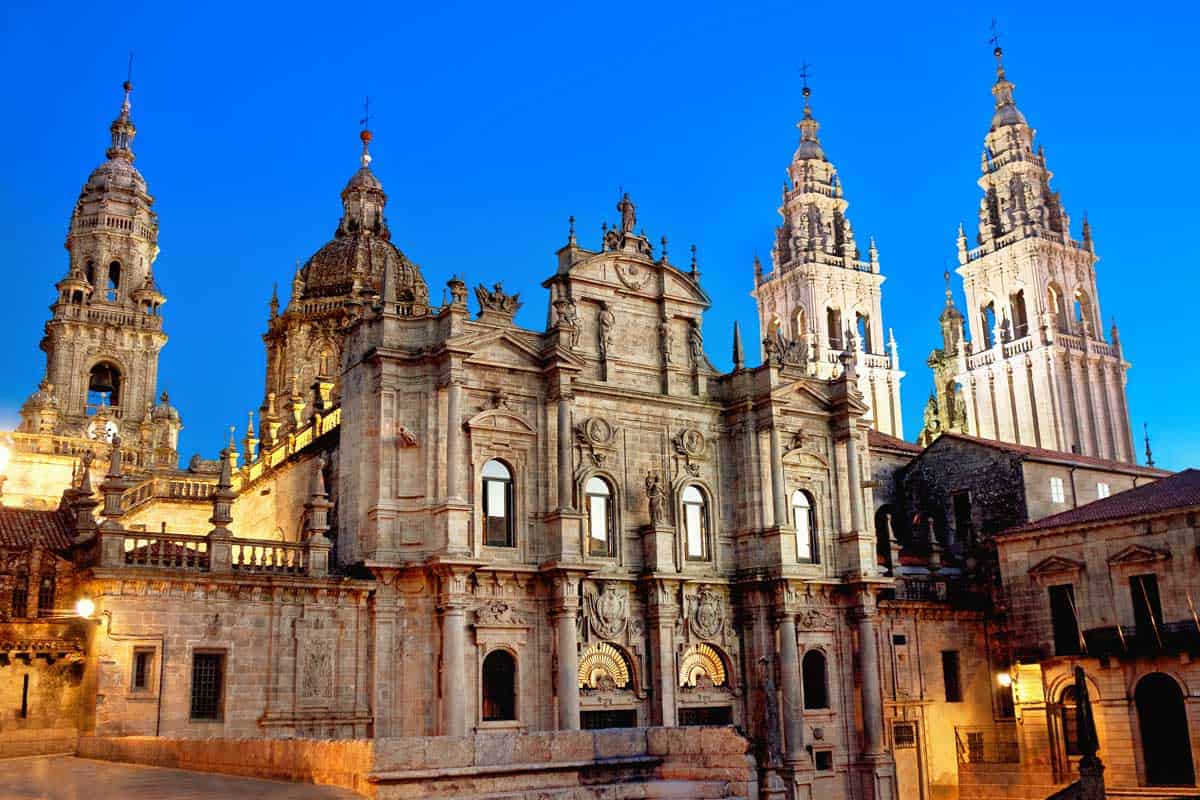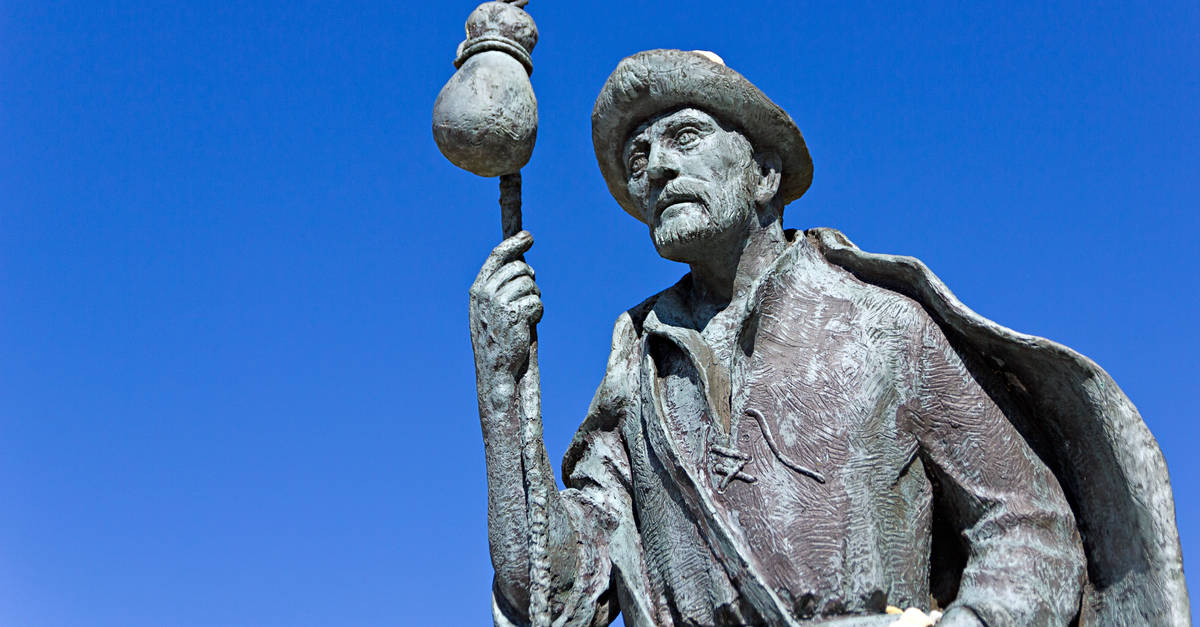Santiago de Compostela is the capital of Galicia, Spain’s northwesternmost region, within the province of La Coruña. It is one of the most important pilgrim destinations in Catholicism and the major tourist attraction of this region.
The city is the final destination of the Camino de Santiago routes. After days or weeks of walking across Spain, entering a city that is all about tourism can be quite disconcerting.
However, tourism certainly isn’t a novelty in this holy city. Many consider Santiago de Compostela the first major tourist destination in the world, and hundreds of thousands of pilgrims have traveled to it every year for the last thousand years. As the burial place of one of the twelve Apostles of Christ, Saint James, this famous city is nearly as important as Jerusalem or Rome.
What’s the history behind this city? Why do people go there? Are there any places in Santiago de Compostela worth visiting besides its breathtaking cathedral?
An interesting fact is that Santiago de Compostela is Spain’s second most rainy city, with 141 days of rain per year. Pack your wet gear.
What about the culture of Santiago de Compostela, the food and drink? If you’re looking for answers to these questions, you’re in the right place – here’s everything you need to know about the capital city of Galicia and its wonder and history.
The History of Santiago de Compostela
As the Roman Empire collapsed, the area of Spain, now called Galicia, was settled by a Germanic tribe called Suebi. The Suebi Kingdom was annexed by the Visigothic Kingdom, which, in turn, was conquered by the Arabs in the early 8th century. The only area of today’s Spain not conquered by the Muslim Umayyad Caliphate was its north-western corner, which became the Kingdom of Asturias.
In what is now Santiago de Compostela, the alleged tomb of Saint James was found by bishop Theodemar of Iria. This occurred in the early 9th century, during the Kingdom of Asturias period. A new settlement arose around the place of discovery and later became known as Santiago de Compostela.
It is essential to mention that the cult of Saint James of Compostela was not the only one to emerge in medieval Spain. There were many region-specific cults in 10th-century northern Iberia, such as Saint Aemilian in Castile or Saint Eulalia in Oviedo.
In any case, Santiago de Compostela became much more politically crucial during the 10th century, and several kings, such as Bermudo II or Ordoño IV, were crowned in its cathedral. During the same century, Santiago de Compostela was repeatedly attacked by Muslim invaders and Viking raiders, which led to the fortification of the entire town.
By the mid-1100s, the pilgrimage to Saint James’s tomb was no longer a Galician-only affair. Santiago de Compostela became a place of pan-European importance. In the following century, the only other places that were revered and visited by Christianity from all over Europe were Jerusalem and Rome. During this same time, it became an archbishopric, which, in turn, increased its population and attracted even more pilgrims.
Centuries later, the French sacked Santiago during the Napoleonic Wars. One of the consequences was the disappearance of the apostle’s remains. They were found nearly 100 years later in one of the cathedral’s cists, where the monks had hidden the relics from the French army. Today, Santiago de Compostela has a population of nearly 100,000 and an increasingly diversified economy, although most of the city’s income still comes from tourism.
The Legends

As the legend goes, Saint James, an apostle of Christ, found his way to Roman Hispania (modern Spain) to preach the gospel there. According to pseudepigrapha called Codex Calixtinus, Saint James returned to Judea from Galicia and was beheaded there under the orders of King Agrippa. The apostle’s disciples carried his body back to Galicia, where they had to deal with a local pagan queen, Loba.
She tried to trick the disciples and get them killed by a dragon and wild bulls, but, as the legend goes, these beasts calmed down and submitted to the disciples once they saw them carrying a Christian cross. Eventually, the disciples managed to reach their destination and bury Saint James at a location now known as Santiago de Compostela. Read this for more about who Santiago was.
Around 800 years later, the relics were supposedly rediscovered by a local hermit, who immediately informed Theodemar of Iria, the bishop I’ve mentioned above. The bishop was then led to the burial place of Saint James by a star, which is the main reason behind Compostela’s name – “a field of stars” (from Campus Stellae).
At the end of the Reconquista period, which saw Spain finally liberated from Islamic rule, it is said that Saint James miraculously intervened to save the Galician armies during their battles against the Muslims.
Even though Pope Leo XIII acknowledged the genuineness of the relics in the late 19th century, the official Vatican has never really stated whether these remains belong to St James.
Why go to Santiago de Compostela?

Just like all other pilgrimages, the pilgrimage to Santiago de Compostela is to pay homage to the relics of St. James. Saint James was a pilgrim and went to many places in what are today Spain and Portugal. As you may have already guessed, that is precisely why Saint James is “the patron saint of all pilgrims.”
And even though the Way of St. James was immensely popular in the Middle Ages, it was gradually abandoned. The main reason was the French Revolution (1789 – 1799), which caused an intense secularization of European society.
However, in the late 20th century, efforts began to recover the Camino de Santiago in any way possible. Pilgrims were provided with new infrastructure in many places and new roads were built (and pilgrim routes established) in numerous network sections. This newfound accessibility is one of the reasons why the number of people making their way to Santiago de Compostela increases with each passing year.
While it’s true that most people go to this city for religious and spiritual reasons, many do so because of the cultural aspects of the entire journey. Many pilgrims do it for personal reasons, while some make the pilgrimage because of the good things they heard from people who traveled there previously. In any case, each motivation to visit Santiago de Compostela has its nuances.
Santiago de Compostela is home to thousands of students attending the University of Santiago de Compostela. The university is one of the oldest in continuous operation and was established over 500 years ago. The university is divided into three campuses, two of which are located in Santiago de Compostela itself (the South Campus and the North Campus).
Santiago de Compostela Cathedral

Many places are worth visiting in Santiago, but none are as breathtaking as the Cathedral of Santiago de Compostela. Located in the very heart of the city, the cathedral is not only one of the most beautiful buildings of this type in Spain but also in the entire world.
Along with St. Thomas Cathedral in India and St. Peter’s Basilica in the Vatican, Santiago de Compostela Cathedral is only one of three existing churches built over Jesus’ apostles’ remains. It is a marvelous example of Romanesque architecture and a place where millions of pilgrims from Europe and the world have made their way in the last thousand years.
The very first religious building built over the burial site of Saint James was a simple chapel. This was followed by two larger pre-Romanesque churches, the second of which was destroyed by the Moors in 997. Today’s Cathedral was founded in 1075, and its construction lasted all the way until 1211.
Welcoming the pilgrims are the Obradoiro Facade, one of the most lavish Baroque facades on the planet, and a massive doorway with over 200 religious figurines called Portico de la Gloria. The interior of the Catedral is extraordinary in every sense of the word. Attending a mass in this church provides the pilgrim with an inspiring spiritual experience. The pilgrim mass is held twice daily, at noon and 7:30 PM.
And while you’re there, visit the cathedral’s museum, which is located within the cloister’s westernmost section. There, you will find numerous exhibits that delve into different art forms, all of which explore the history of the church – tapestries, textiles, sculptures, paintings, archaeological findings, etc.
One of the most revered shrines in all of Christendom, the capital city of Galicia is a great place to visit whether you’re a pilgrim or not. Besides the fact that Santiago de Compostela has many interesting attractions worth visiting, it is also one of the most convenient locations for tourists who’d like to explore the west coast of Spain and the region of Galicia itself.

I love hiking, backpacking, and camping. From the Camino de Santiago to the West Highland Way in Scotland or simply a great day hike on the weekend. Hiking refreshes me, my mind, and keeps my body reasonably fit. So far I have walked three Camino routes and many other long distance hikes in the UK, Canada, and around the rest of Europe. One of the best was my hike up Ben Nevis.




Thanks for the very informative article. I am walking the Camino Portugues in September 2021 and looking forward to exploring Santiago again. I have walked the French and North Caminos and truly enjoy the adventure. Thanks again Lonnie
Wonderful thank-you Leslie.
Last time there I largely concentrated on my Camino friends, didn’t fully understand the history you discuss and only saw a fraction of the places you talk of.
I’ll stay longer next time and immerse in all you mention.
Thanks again, Phil